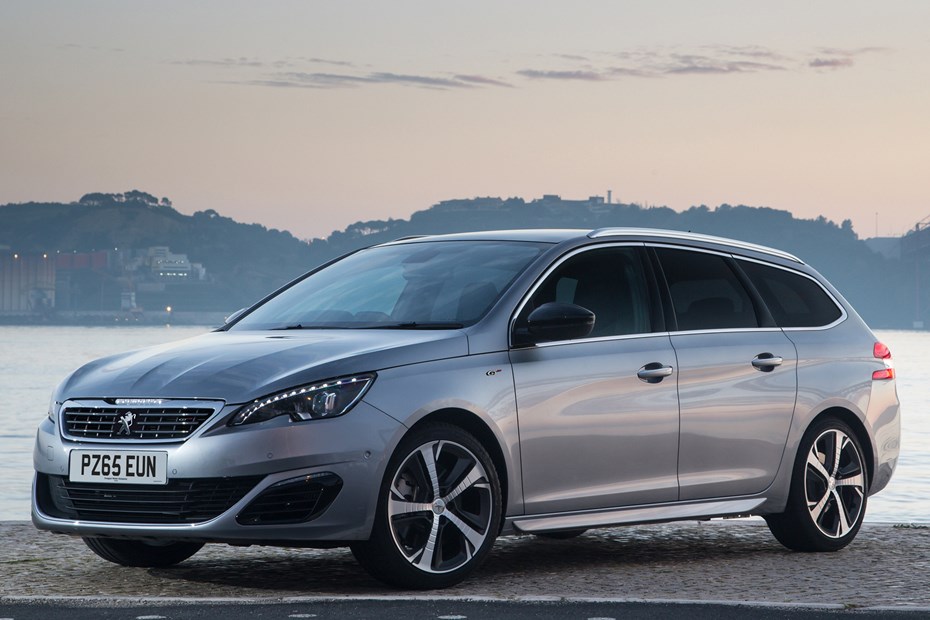
Peugeot 308 SW (2014-2021) engines, drive and performance

An efficient range of engines are offered, including a new ultra-low emissions diesel and an impressive three-cylinder petrol engine. See the Running Costs section for more details on fuel economy and CO2 emissions, which make for attractive reading across the range.
Petrol engines
The 308 SW is the first Peugeot to feature the company’s new ‘PureTech’ three-cylinder turbo e-THP petrol engines. There are two versions offered in the SW; both are 1.2 litres in size and include a stop/start function.
There’s the 1.2 e-THP 110, which has 109bhp and comes with a five-speed manual gearbox.
We drove the other version, the more powerful 1.2 e-THP 130 with 128bhp and either a six-speed manual or six-speed automatic transmission. It’s an impressive engine, far quieter and less coarse than many three-cylinder units from other manufacturers and flexible too, with smooth acceleration whichever gear you’re in.
Diesel engines
Four diesels are available from launch. Two of them are Peugeot’s latest ‘BlueHDi’ powerplants that meet the tighter Euro6 emissions standards.
The range kicks off with the familiar 1.6 HDi 92, a 91bhp unit that works well in the regular 308 hatch. It’s matched with a five-speed manual gearbox and is the cheapest of the four engine options. Low emissions mean it won’t cost much to tax, either.
Next level up is the 113bhp 1.6 e-HDi 115bhp, again already a proven engine in other Peugeot models. It’s combined with a six-speed manual gearbox and features a stop/start system – that’s what the ‘e’ bit in the name signifies. If its performance in other models is anything to go by, it’ll feel sluggish if you let the revs drop but punches strongly if you keep it in its sweet spot.
By far the most efficient Peugeot 308 SW performance comes from the new 118bhp BlueHDi 1.6 120. It offers a rather staggering claimed 88mpg average and CO2 emissions as low as 85g/km (depending on wheel and tyre size). It’s available with a six-speed manual gearbox only and also has a stop/start system.
On the road it’s seriously good – far more quiet and refined than Peugeot diesel engines of the recent past and with very usable performance. It doesn’t feel strangled in the way that some low emissions diesels do, with reasonable acceleration available from very low revs and enough shove for overtaking when required.
Topping off the range is the larger 148bhp 2.0 BlueHDi 150. It too is very quiet on the road and although it has the highest CO2 emissions of the diesel range it’s still an incredibly clean engine.
Stop/start is standard and it’s available with either a six-speed manual or new six-speed automatic gearbox. We drove the engine with the auto ’box and it’s a pleasant enough transmission on the road, only occasionally thunking a gear home a little more abruptly than you might expect. Unlike the frustratingly jerky EGC semi-auto transmission the old 308 SW was lumbered with, this is a conventional transmission and all the better for it.
PureTech unit brings power and efficiency
A 1.2-litre petrol PureTech engine was launched in 2014 with either 110bhp or 130bhp and CO2 emissions as low as 105g/km.
Like the regular 308 hatch, the 308 SW has a relaxed feel on the road. Ride quality is a good compromise between being soft enough to cope well with bumpy surfaces but firm enough to avoid rolling around too much in the corners.
The power steering isn’t exactly brimming with feedback but it’s accurate nonetheless and the tiny steering wheel doesn’t feel as out of place as you might expect in what is a relatively large car.
Turning circle is good, too, making negotiating car parks an easy task.



